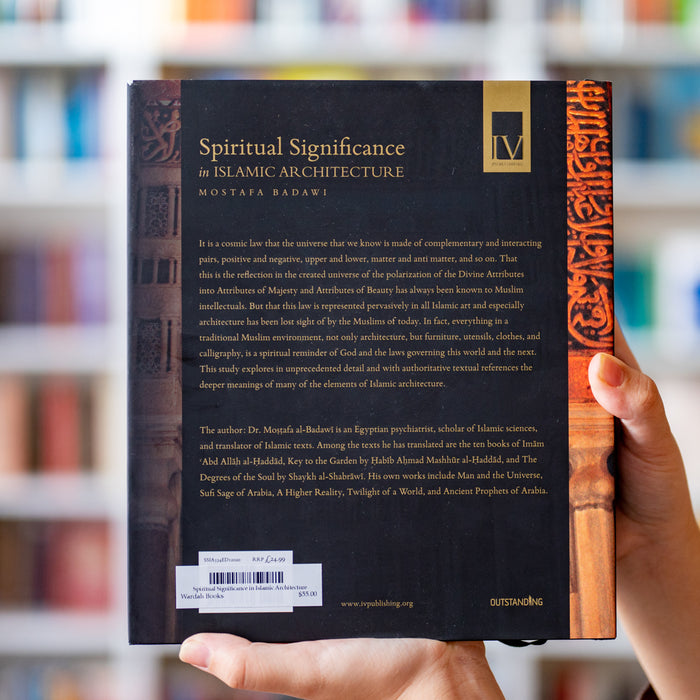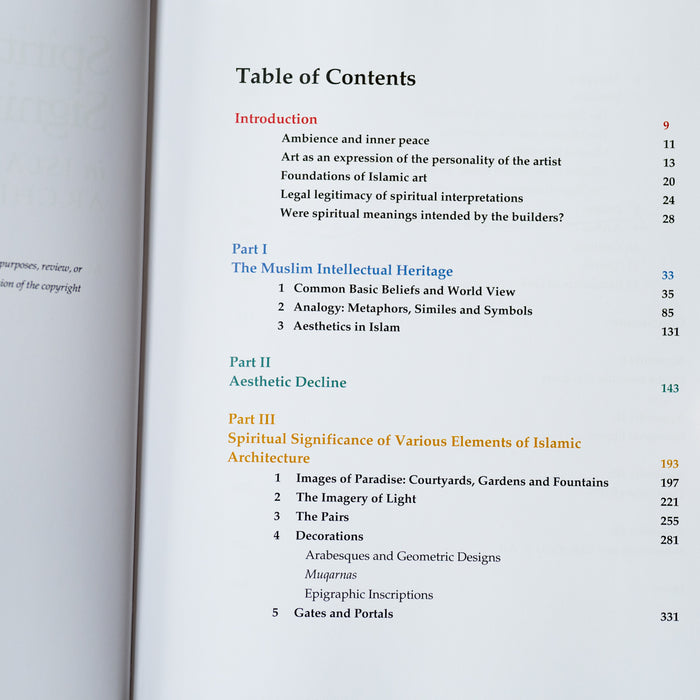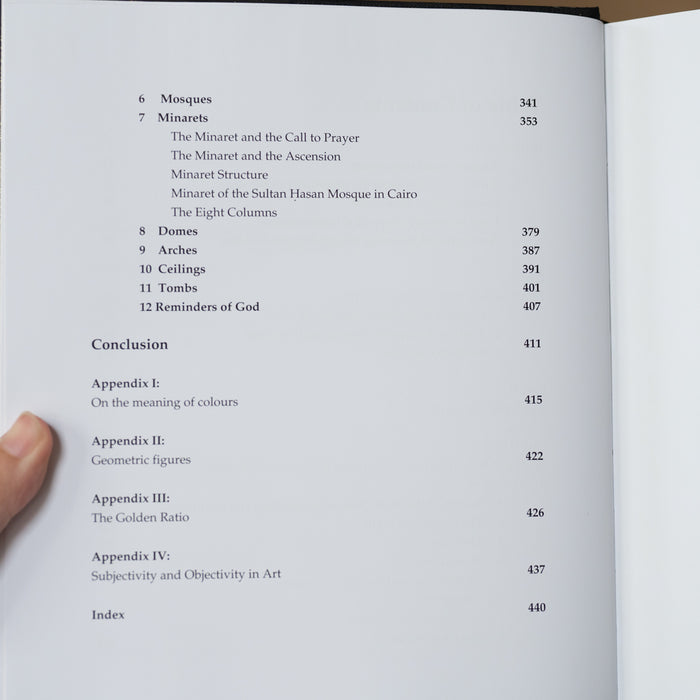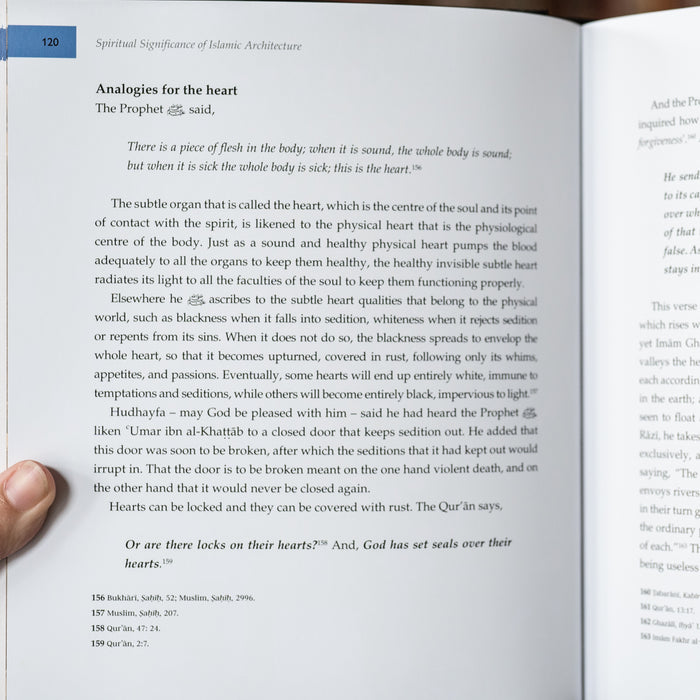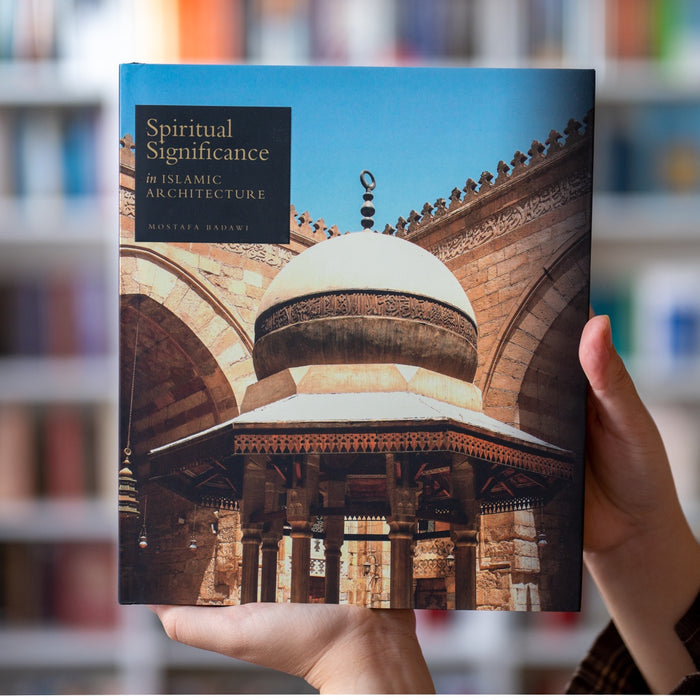
Spiritual Significance in Islamic Architecture
Mostafa Badawi
Hardback, 456 pages
It is a cosmic law that the universe that we know is made of complementary and interacting pairs, positive and negative, upper and lower, matter and anti-matter, and so on. That this is the reflection in the created universe of the polarization of the Divine Attributes into Attributes of Majesty and Attributes of Beauty has always been known to Muslim intellectuals. But that this law is represented pervasively in all Islamic art and especially architecture has been lost sight of by the Muslims of today. In fact, everything in a traditional Muslim environment, not only architecture, but furniture, utensils, clothes, and calligraphy, is a spiritual reminder of God and the laws governing this world and the next.
This study explores in unprecedented detail and with authoritative textual references the deeper meanings of many of the elements of Islamic architecture.
The author, Dr. Mostafa al-Badawi is an Egyptian psychiatrist, scholar of Islamic sciences, and translator of Islamic texts.
Contents
Introduction
• Ambience and Inner Peace
• Art as an expression of the personality of the artist
• Foundations of Islamic art
• Legal legitimacy of spiritual interpretations
• Were spiritual meanings intended by the builders?
Part 1: The Muslim Heritage
1. Common Basic Beliefs and World View
2. Analogy: Metaphors, Similes and Symbols
3. Aesthetics in Islam
Part 2: Aesthetic Decline
Part 3: Spiritual Significance of Various Elements of Islamic Architecture
1. Images of Paradise: Courtyards, Gardens and Fountains
2. The Imagery of Light
3. The Pairs
4. Decorations
5. Gates and Portals



